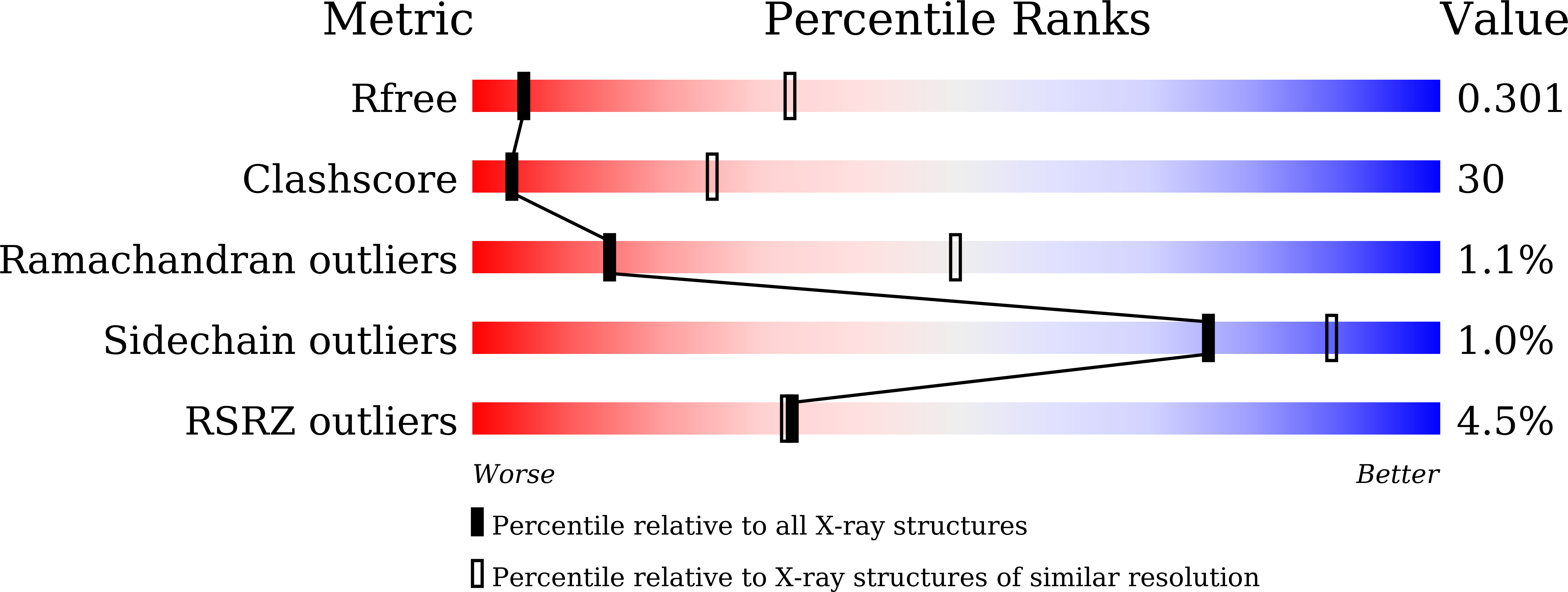
Deposition Date
2022-03-20
Release Date
2022-09-07
Last Version Date
2023-11-29
Entry Detail
PDB ID:
7XB5
Keywords:
Title:
Structure of the ligand-binding domain of S. cerevisiae Upc2 in fusion with T4 lysozyme
Biological Source:
Source Organism:
Saccharomyces cerevisiae S288C (Taxon ID: 559292)
Escherichia virus T4 (Taxon ID: 10665)
Escherichia virus T4 (Taxon ID: 10665)
Host Organism:
Method Details:
Experimental Method:
Resolution:
3.44 Å
R-Value Free:
0.30
R-Value Work:
0.25
R-Value Observed:
0.26
Space Group:
C 2 2 21


